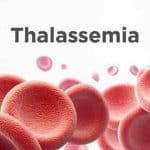ISLAMABAD, JUNE 15 (ONLINE): Atherosclerotic cardiovascular disease is linked to plaque buildup in blood vessels. It can increase the risk of serious cardiovascular events, such heart attack and stroke.
Statins are a medication type that can help people at risk for atherosclerotic cardiovascular disease. Doctors look at several factors to determine if statin therapy makes the most sense for someone.
The American Heart Association recently updated its risk equations for predicting the risk of cardiovascular disease events.
A recent study found that using these latest risk equations could result in fewer adults meeting eligibility criteria for primary prevention statin therapy, which could change clinical practice in this area.
Doctors have to make tough choices about prescribing medications, weighing the potential risks and benefits. They typically use official recommendations from governing bodies and relevant medical organizations to help guide their clinical practice recommendations.
Groups update these guidelines based on components like newly available data. Researchers want to understand how these guideline changes affect clinical practice and medication recommendations.
A study recently published in JAMA Internal MedicineTrusted Sourcelooked at two equation sets to measure 10-year atherosclerotic cardiovascular disease risk and how they affected primary prevention statin therapy recommendations.
Researchers used a weighted sample of 3,785 adults. The results indicated that using the one equation set, PREVENT, greatly reduced the average estimated 10-year risk for atherosclerotic cardiovascular disease.
The researchers calculated that using PREVENT equations could also decrease the number of adults who meet eligibility criteria for primary prevention statin use from 45.4 million to 28.3 million.
The results suggest major changes could occur in the number of people prescribed statins if the PREVENT equations are used.
When are statins prescribed to prevent cardiovascular disease?
As noted by the American Heart AssociationTrusted Source, “atherosclerotic cardiovascular disease (ASCVD) is caused by the buildup of plaque within the arteries, limiting the flow of blood to important organs.”
Several atherosclerotic cardiovascular disease-related conditions can lead to serious bodily harm, such as heart attacks and strokes.
Sometimes, doctors may prescribe statinsTrusted Source to people who are at particular risk for atherosclerotic cardiovascular disease. StatinsTrusted Source are also sometimes prescribed to help lower cholesterol levels.
Cheng-Han Chen, MD, a board-certified interventional cardiologist and medical director of the Structural Heart Program at MemorialCare Saddleback Medical Center in Laguna Hills, CA, not involved in the current research explained to Medical News Today that “[s]tatins are commonly used in clinical practice in two scenarios: In people who have already suffered a cardiovascular event such as heart attack or stroke, or in people with risk factors for developing heart disease.”
“For people who have already had a heart attack or stroke, we recommend a ‘high-intensity’ statin, such as atorvastatin or rosuvastatin,” he told us.
“For everyone else, the decision to start a statin depends on our evaluation of their risk for developing cardiovascular disease in the future. This includes an assessment of their risk factors for heart disease, such as a high blood pressure and/or diabetes. To help us decide whether to start someone on a statin, we will frequently use a risk calculator to estimate someone’s 10-year risk of developing cardiovascular disease.”
– Cheng-Han Chen, MD
How statin prescription guidelines have changed
The researchers who conducted the current study explain that the American Heart Association and American College of Cardiology initially developed pooled cohort equations (PCEs) in 2013.
These equations helped calculate a person’s estimated 10-year risk for atherosclerotic cardiovascular disease. However, these equations may not be entirely accurate, particularly for groups that were underrepresented in the initial cohorts that derived the PCEs.
In 2023, the American Heart Association Cardiovascular-Kidney-Metabolic Scientific Advisory Group developed a new set of equations to predict atherosclerotic cardiovascular disease risk.
This set of equations, the PREVENTTrusted Source equations, does not include race but instead adds in other measurements like kidney function, the social deprivation index, and statin use.
Follow the PNI Facebook page for the latest news and updates.








